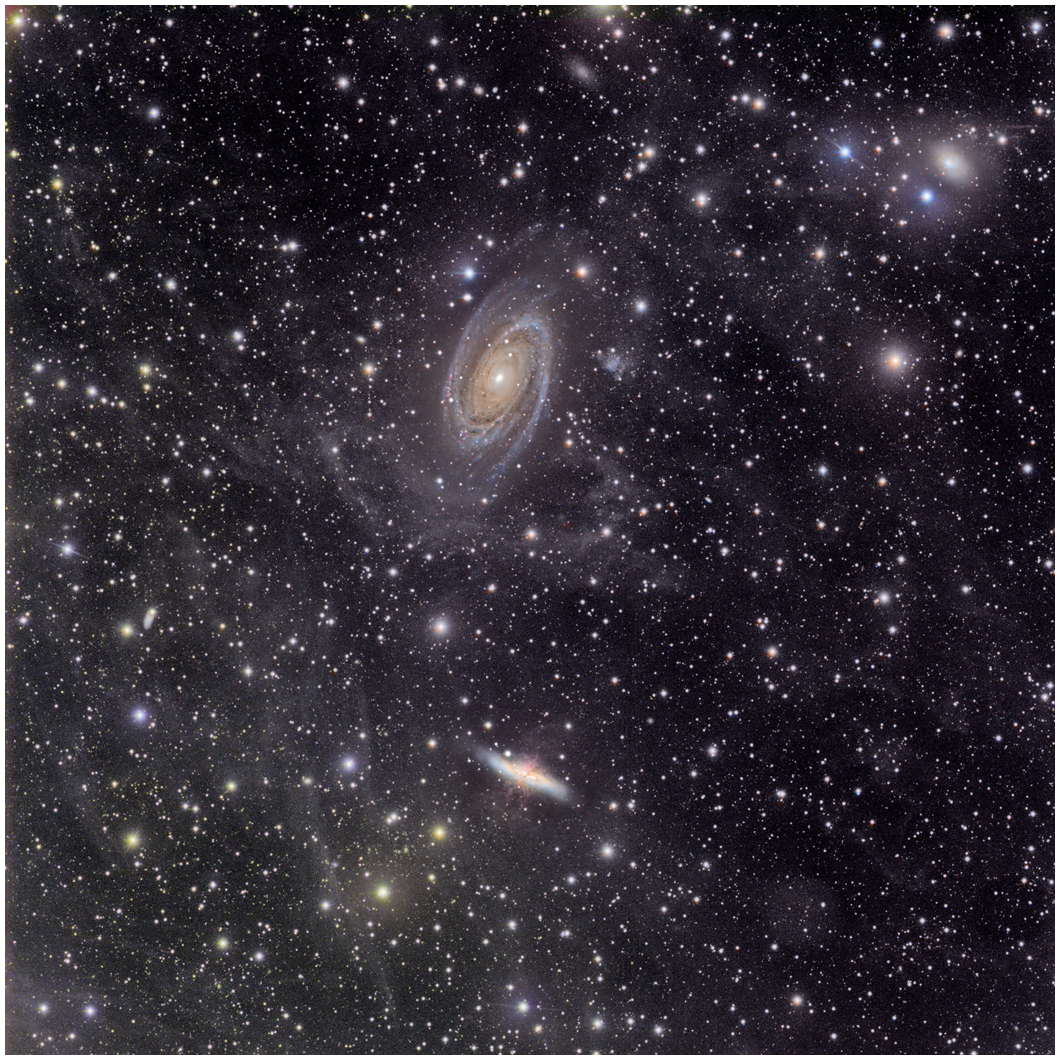
James Janusz 2000 thru 2021 All Rights Reserved |
| Telescope: Astro-Physics 160 EDF | Description:Messier 81 (also known as NGC 3031 or Bode's Galaxy) is a grand design spiral galaxy about 12 million light-years away, with a diameter of 90,000 light years, in the constellation Ursa Major. Due to its proximity to our galaxy, large size, and active galactic nucleus (which harbors a 70 million Sun super-massive black hole), The galaxy's large size and relatively high brightness makes it a popular target for amateur astronomers. Duh? Messier 82 AKA NGC 3034, or The Cigar Galaxy) is a starburst galaxy approximately 12 million light-years away in Ursa Major. A member of the M81 Group, it is about five times more luminous than the Milky Way and has a center one hundred times more luminous. IFN The Integrated flux nebulas are a relatively recently identified astronomical phenomenon. In contrast to the typical and well known gaseous nebulas within the plane of the Milky Way galaxy, IFNs lie beyond the main body of the galaxy. The term was coined by Steve Mandel who defined them as "high galactic latitude nebulae that are illuminated not by a single star (as most nebula in the plane of the Galaxy are) but by the energy from the integrated flux of all the stars in the Milky Way. These nebular clouds, an important component of the interstellar medium, are composed of dust particles, hydrogen and carbon monoxide and other elements." (WIKI) |
|---|---|
| Mount: Astro-Physics AP1600 GTO | Constellation: Ursa Major |
| Camera: SBIG STX 16803 with Astrodon Ver. 2 Filters | Remotely Imaged With CCD Commander. |
| Guiding:SBIG ST402 Guider | Type: Galaxies |
| Exposure Data: 4 hours each RGB 5 hours Luminance. | Position: R.A. 09h 55m 33s Dec +69° 03' 55" |
| Processed using Maxim data aquisition, PixInsight and PhotoShop image processing | Date: February 2021 |
| Data Acquisiton, Reduction and Processing by Jim Janusz | Imaging Location: Cave Creek Canyon Observatory |
-END |
